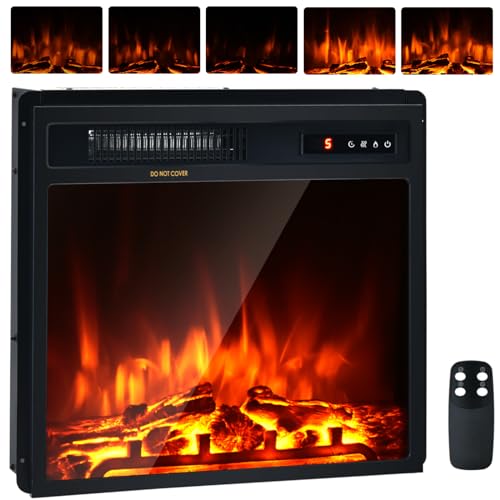5 Killer Quora Answers To Wood Burning Fires
페이지 정보

본문
 Wood Burning Fires Need to Be Hot and Clean
Wood Burning Fires Need to Be Hot and CleanWood burning fires are not only comforting and mesmerising They're also an essential part of our wellbeing and health. However, they must be clean and hot in order to function effectively.
Green, or unseasoned, wood has a high moisture content that makes it challenging to light and burn efficiently. Seasoned, or kiln dried wood has a lower moisture content and is easier to light and keep burning.
Efficient Combustion
The wood fire should be hot enough to burn off moisture and reach temperatures of over 540 degrees F. 800 deg F in ideal conditions) where the heat-producing secondary combustion process starts. This is the first step in efficiently burning fuel while reducing pollutants and smoke in the flue.
It is vital to realize that the temperature needed to ignite the secondary combustion process is dependent on the kind of fuel used and the surrounding conditions. The best way to minimize these variations is by using well-seasoned firewood that has less than 20 percent.
Additionally, the amount of air that is supplied to the fire can have a significant impact on its heat output and burn time. The more oxygen available, the more hot the fire will burn. If the supply of air is not sufficient the wood fire will produce less heat and burn at a slower rate.
A wood stove or fireplace insert that has an adjustable air damper will increase the burn time and efficiency. The wide-open setting lets the fire to take all the oxygen it needs and quickly drain the fuel supply. A fire that is contained in the confines of a small area is less likely to spread.
A dry load of firewood is also crucial for efficient shed wood burner burning. If wood is cut fresh and hasn't had the chance to dry out it will have a high levels of water, which may make it difficult for logs to burn. It is recommended to only use cast iron wood burning stove that is seasoned and has been stored outdoors for a period of six to nine months to ensure optimal performance.
The BTU content of corner wood burning stove is a different factor to consider. For instance, white pine or spruce trees may be less expensive than eastern hardwoods, such as shagbark hickory and black locust however, the BTU values of the latter are more, meaning they provide more heat for the same amount of wood. This is why it's important to consider your heating requirements and the fuel costs when selecting your firewood.
Clean Burning
Wood smoke is a source of indoor air pollutants that irritate the lungs and trigger respiratory distress, particularly for children and seniors. These pollutants include volatile aromatic hydrocarbons (PAHs) such as benzo-a-pyrene and formaldehyde, as well as volatile organic compounds like benzene. Volatile Tars (such as creosote) are also released when firewood is burned.
Smoke from older, poorly-designed fireplaces and wood stoves could contribute to poor outdoor air quality by decreasing visibility and causing photochemical smog. If used properly however, modern combustion technology in clean-burning wood stoves and fire places can reduce these emissions.
Stage 1 - Moisture Vaporizes: As the log heats up it releases water vapor, which escapes through the chimney flue. This consumes more energy than it would when the log was dried to dry prior to burning. This wastes energy which could be used to warm your home.
In the flue, these vapors mix with carbon particles to create smoke. Smoke is among the major sources of particulate matter and smog that is found in the air.
When used correctly, wood woodburning stoves and fireplaces using clean burn technology can reduce the problem by converting the logs to charcoal-like conditions, which releases less volatile gasses and generates most of the energy from the log as usable heat.
Avoid using damp or sour wood to fuel your fire - it's more difficult to burn and creates lots of creosote compared to well-seasoned wood. Also, don't overburden your stove with thin and soft wood such as fir or pine It takes more energy to burn them and they produce more smoke, which can lead to chimney fires.
Use a bucket made of steel to remove ashes from the stove, and always wait until they cool before handling them. Be sure to store or dispose of them correctly as ashes can ignite when exposed to water, and they are hazardous in landfills. Instead, you should use them around your garden or at the house.
Properly storing, seasoning and burning your wood will save you money on fuel and will keep your stove functioning efficiently. It is also essential to clean your chimney regularly to get rid of creosote and other particles, as well as prevent chimney fires and maintain the safety of your operation.
Safety
It's difficult to beat a warm fireplace on a cold winter night however, security precautions should be taken. When fires are improperly built or tended to, or left unattended, hazardous fumes could be released into the home and dangerous creosote deposits can build up within the chimney. These deposits can block the flue and reduce the flow of air, making your wood stove or furnace not to work as effectively.
Never burn painted or treated wood, household waste, rags, paper and other combustible materials inside your wood-burning stove or fireplace. They could emit toxic fumes, such as carbon dioxide and produce toxic gases. Don't use flammable liquids to start fires. Gasoline, lighter fluid and kerosene can cause fires in chimneys that can cause emissions to rise and create toxic creosote.
Keep combustible materials like furniture, curtains, and even toys away from your stove or fireplace. Do not hang clothes near or on the fireplace that is burning wood. Make sure your children know that the fireplace is hot and should not be touched.
Use only seasoned wood burning stove in conservatory for your stove or fireplace. The wood that is seasoned has been dried throughout the summer to reduce moisture content. Wet woods produce more smoke and creosote. On the other hand, seasoned logs are more efficient and clean. The wood that has been seasoned is darker, has cracks along the grain's end and makes a hollow sound when you tap it. Place your logs outdoors and stack them neatly with the top securing and allowing air to circulate around them.
Overloaded appliances produce more smoke, but less warmth. Overloaded fires may also produce dangerous levels of carbon monoxide. If you own an older appliance that has a lining made of metal, you should inspect the liner on a regular basis for signs of wear and tear that can cause an explosion in the chimney.
The EPA recommends using split, dry and well-seasoned wood to help reduce smoke in your home. Build a hot fire by using small pieces. Avoid using soft woods such as pine. Pine is a great starting material for the fire, but it shouldn't be used for more than. These woods with softer sap contain and resin that, when burned, deposit excessive creosote in the chimney.
Maintenance
A warm fire in a wood burning fireplace is the perfect method to relax during the cold nights of winter. However, it is important to maintain your fireplace in order to ensure that you reap the maximum enjoyment from your fireplace. Regularly cleaning and inspecting your fireplace is the best method to avoid any issues that might occur. This prevents the build-up of creosote and keeps the chimney clean to ensure maximum efficiency.
If wood doesn't completely burn, creosote forms in the chimney. If a large amount of creosote is accumulated, it can trigger chimney fires which are the second most common cause of house fires in the United States. There are a variety of factors that can contribute to a fire's failure to completely burn, including dampers that have not been properly closed and cracks in the chimney liner as well as the absence of regular cleaning and ash removal.
Creosote may build up excessively when wood is not properly prepared. This is because nearly half the weight of a piece of wood is water. When the fire is burning the water boils and releases heat but it also consumes energy during the process. The water vapor that is created then condenses into creosote or is released into the air as a part of smoke.
Another hazard of burning wood is soot. Soot is softer than creosote. However, it can cling to the walls of your fireplace, and block air flow. It is also a fire hazard because it is easily ignited when exposed to combustible gases.
It is recommended to remove the ashes and put them in an ash bucket made of metal, which you should keep outside on a non-flammable surface. The ashes can also serve as a source of nutrients for plants, so don't forget to scatter them across the lawn!
It is recommended to ensure that your chimney and fireplace are checked by a Regency Dealer certified. The technician can look for cracks, creosote and soot levels as well as a properly shut damper and the condition of the catalyst. If you have a two-stage chimney that includes an air tube, the catalyst must be removed and visually checked for blockages. Refer to the user manual to learn how to do this for your fireplace.
- 이전글Mastering the Art of How to Pick a Winning Slot 24.12.30
- 다음글Proof That Santa Klaus Is exactly What You're In search of 24.12.30
댓글목록
등록된 댓글이 없습니다.




